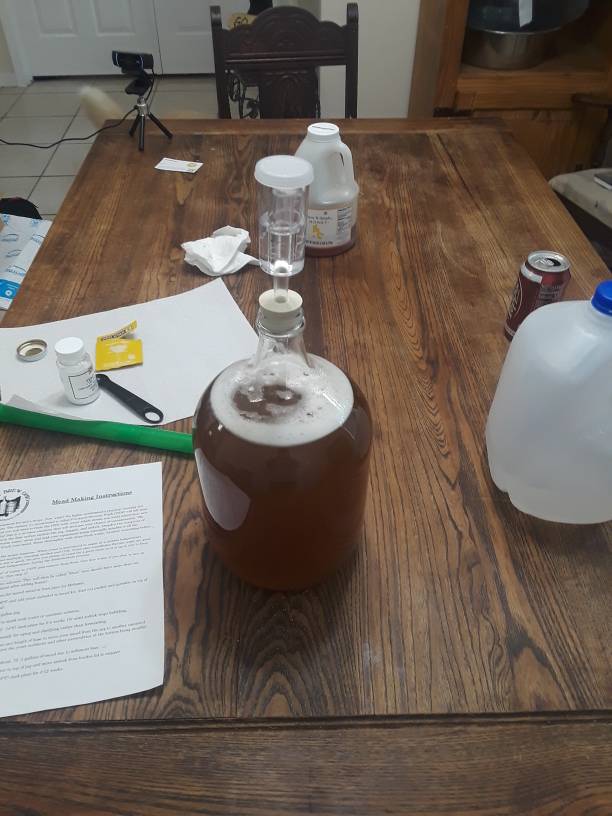ArcticWolf907
Member
- Joined
- Sep 9, 2019
- Messages
- 16
- Reaction score
- 1
Hi, so I'm planning my first mead brew. I've bought a $15 mead kit off of Amazon which includes a 1 gal carboy, stopper, airlock, yeast packet, and a yeast nutrient. I plan on using StarSan. I've bought 5 lbs of raw honey from Walmart. I've also got my eye on a temperature control device from Amazon that I plan to hook up to a spare fridge we've got in the garage since I live in Texas and it's been 90+ degrees for most of the summer. I've been doing mead research for about a month prior to me buying the kit mentioned above.
I don't have my recipe worked out fully, but my plan currently stands as follows: 3 lbs honey for fermentation. After fermentation I plan to use sorbet and sulfite to halt fermentation and back sweeten by adding peaches (unknown quantity) and a few plumbs (also unknown quantity).
Any advice regarding flavor and sweetness? I have no idea how much of each of the fruits I should put in to balance them out. I want them to compliment each other but not beat each other out. I'm also looking towards the sweeter end of things as that is my goal with this first brew.
I plan to adjust recipe with subsequent batches and improved gear, but atm I would like advice with what I have.
I don't have my recipe worked out fully, but my plan currently stands as follows: 3 lbs honey for fermentation. After fermentation I plan to use sorbet and sulfite to halt fermentation and back sweeten by adding peaches (unknown quantity) and a few plumbs (also unknown quantity).
Any advice regarding flavor and sweetness? I have no idea how much of each of the fruits I should put in to balance them out. I want them to compliment each other but not beat each other out. I'm also looking towards the sweeter end of things as that is my goal with this first brew.
I plan to adjust recipe with subsequent batches and improved gear, but atm I would like advice with what I have.















































![Craft A Brew - Safale S-04 Dry Yeast - Fermentis - English Ale Dry Yeast - For English and American Ales and Hard Apple Ciders - Ingredients for Home Brewing - Beer Making Supplies - [1 Pack]](https://m.media-amazon.com/images/I/41fVGNh6JfL._SL500_.jpg)









